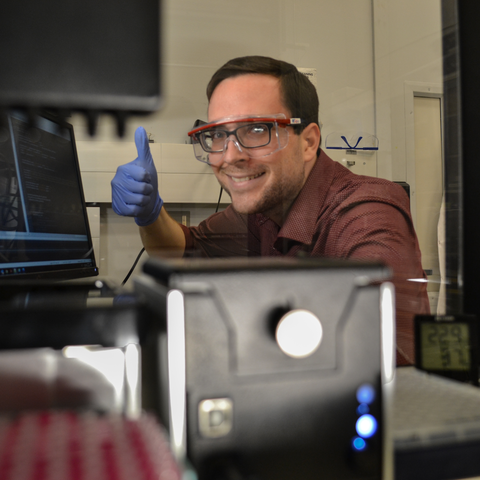
Some assembly required — NIST postdoctoral researcher Jacob Majikes takes the smallest fragments of life and combines them into new structures ... or rather, lets them combine themselves.
First off, what is this “self-assembly” by which he creates? The building blocks of many things in nature — from trees and insects to puppies and even our own bodies — assemble themselves into unique structures without any outside direction.
For Jacob and supervisor Alex Liddle, those building blocks are individual strands of DNA. Pulling apart the well-known DNA double helix, the researchers can introduce certain strands to others and facilitate the self-assembly of unique structures with new properties to explore. It’s a process that requires only a few drops of salt water, DNA and a heater, making it a cost-effective option for labs.
Still in its early phases, this technology is, to some extent, a solution looking for a problem. Some claim it might replace our way of manufacturing semiconductor circuitry on nanoelectronics or using proteins to process enzymes, displacing existing technologies.
When Jacob and Alex toss around big-picture ideas for this tiny technique, one consistently rises to the top: the space between these fields.
DNA nanostructures may not have the efficiency or output of enzymes, small molecules or semiconductors, but they can address problems these systems struggle with. DNA nanostructures can fit into and work inside cells in a way that electronics can’t, detecting a combination of disease risk factors simultaneously. They can assemble complex enzymes like nitrogenase outside of their (literal) roots in nature to address global carbon emissions from plant fertilizers, something that current biological methods struggle to do.
Some of our world’s most complicated problems require an equally complex solution, but no one field can answer the call in isolation. In the meantime, Jacob and Alex are working to lower the levels of uncertainty and error in their technique as much as possible, so that it can be a useful tool in the wider world.
Follow us on social media for more like this from all across NIST!

